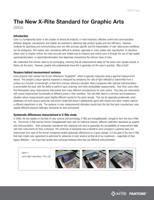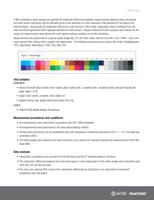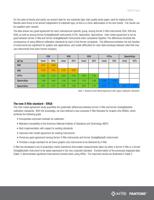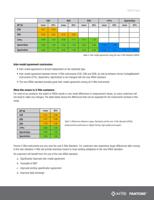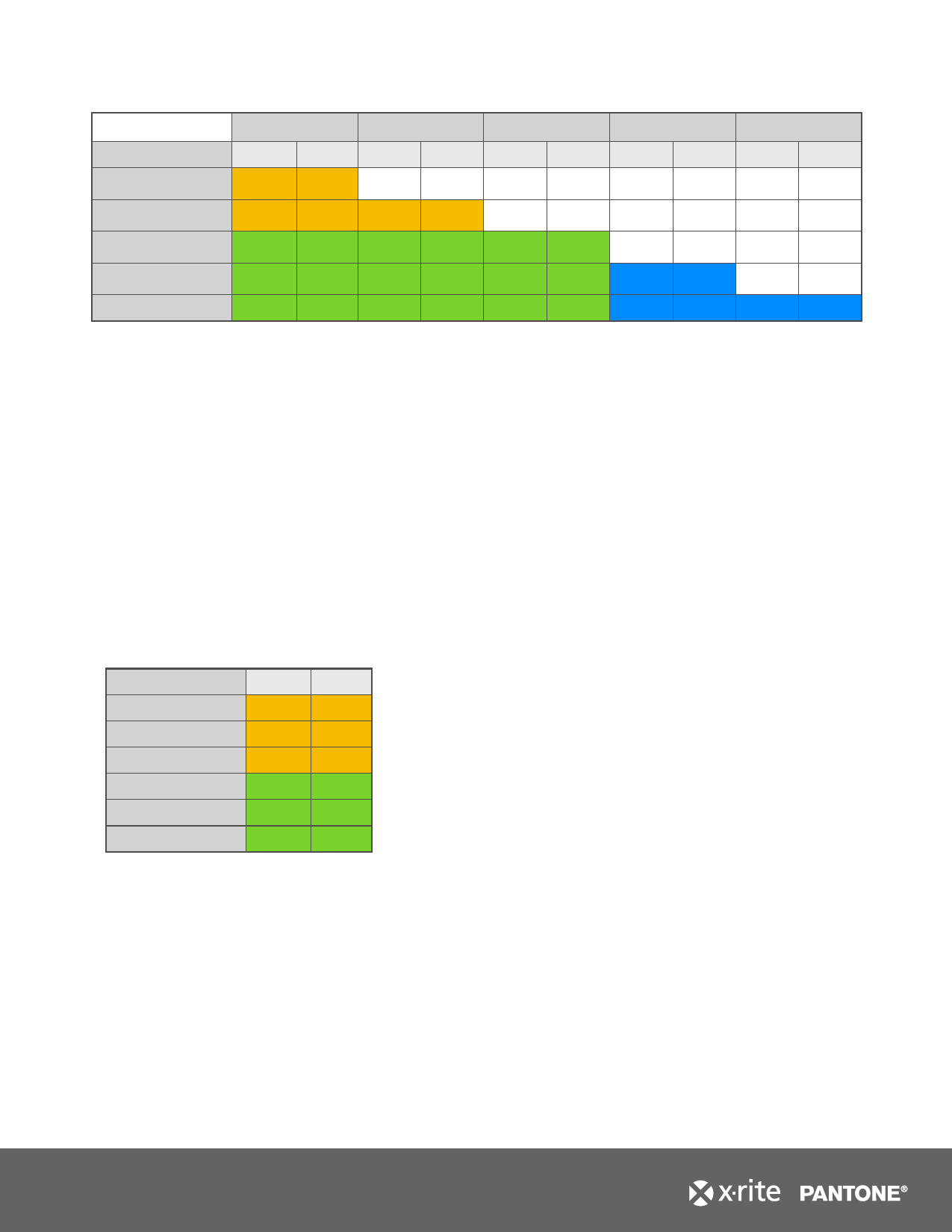
White Paper
dE*ab
938
939
i1Pro
SpectroEye
Spectrolino
530
mean
95%
0.27
0.48
0.39
0.85
0.49
1.03
0.60
1.26
0.56
1.17
938
mean 95%
0.33
0.82
0.50
1.11
0.56
1.25
0.55
1.28
939
mean 95%
i1Pro
mean 95%
SpectroEye
mean 95%
0.51
1.23
0.43
0.85
0.56
1.36
0.44
0.95
0.47
1.01
0.37
0.83
Table 2: Inter-model agreement using the new X-Rite Standard (XRGA)
Inter-model agreement conclusions
• Inter-model agreement is almost independent on the substrate type.
• Inter-model agreement between former X-Rite instruments (530, 938 and 939), as well as between former GretagMacbeth
instruments (i1Pro, Spectrolino, SpectroEye) is not changed with the new XRGA standard.
• The new XRGA standard provides good inter-model agreement among all X-Rite instruments.
What this means to X-Rite customers
For most of our products, the switch to XRGA results in very small differences in measurement values, so many customers will
not need to make any changes. The table below shows the differences that can be expected for the instruments involved in this
study:
dE*ab
530
938
939
i1Pro
SpectroEye
Spectrolino
mean
95%
0.27
0.66
0.27
0.66
0.28
0.66
0.60
1.61
0.60
1.63
0.60
1.63
Table 3: Differences Between Legacy Standards and the new X-Rite Standard (XRGA)
(measurements performed on Digital Printing, High quality proof paper)
Former X-Rite instruments are very near the new X-Rite Standard. For customers who experience larger differences after moving
to the new standard, X-Rite will provide seamless means to move existing databases to the new XRGA standard.
All customers will benefit from the use of the new XRGA standard:
a. Significantly improved inter-model agreement
b. Traceable to NIST
c. Improved printing specification agreement
d. Improved data exchange

